Hussaini Hanging Bridge in North Pakistan

Despite its ominous appearance, dozens of hikers test their adrenaline yearly as they cautiously make their way across the Hussaini Hanging Bridge. This crossing has become one of the most popular tourist destinations in North Pakistan over the years. Although regarded as the most dangerous bridge in the world, it's only one of several treacherous suspension bridges in the country's northern region.
Locals built the 660-foot hanging bridge in the '60s, and what makes it risky are its flimsy-looking ropes and 472 wooden planks with sizeable gaps in between each. Although similar crossings exist in other local places like Gilgit-Baltistan, the Hussaini Hanging Bridge is still the scariest.
Langkawi Sky Bridge in Malaysia
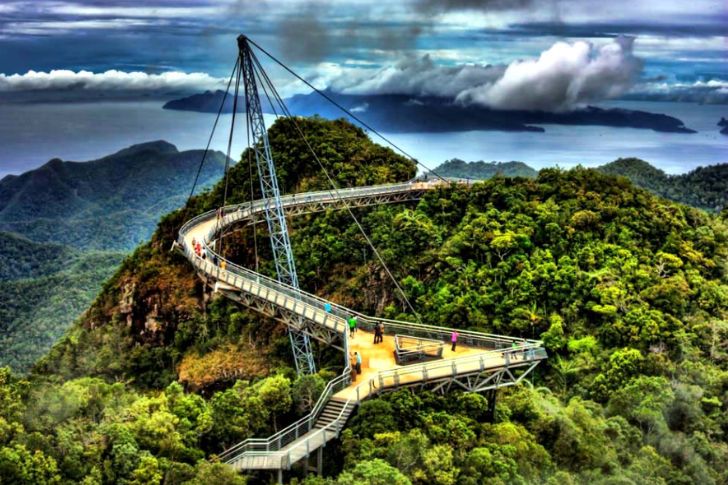
This Malaysian steel sky bridge is another incredible engineering feat. The Langkawi Sky Bridge was constructed in 2005 to help pedestrians traverse the mountain's steep slopes. However, since then, many tourists have been drawn to the scenic stroll atop the Gunung Mat Chinchang mountain and the surrounding lush forest.
This 410-foot-long pedestrian cable-stayed bridge offers breathtaking vistas from every position, even though it may be disconcerting for people afraid of heights. Those who are not brave enough for the trek on foot can take the Langkawi Cable Car, a 2150-meter-long cable car that provides a once-in-a-lifetime bird's eye view of the magnificent Malaysian landscape.
Seven Mile Bridge in Florida, USA

Did you know it takes up to 10 minutes to drive from one end of the Seven Mile Bridge in Florida to the other? The 6.7-mile Overseas Highway connects Knight's Key and Little Duck Key on the state's southern coast.
Seven Mile Bridge is recognized as one of the world's longest bridges and is also dangerous because the builders didn't make it to withstand bad weather.
The crossing is ideal during sunny days or afternoon strolls, but it can be a nightmare during the winter and high tide. Aside from accessing small islands, it offers lovely ocean views and has been featured in movies like "2 Fast 2 Furious."
Carrick-a-Rede Rope Bridge in Northern Ireland
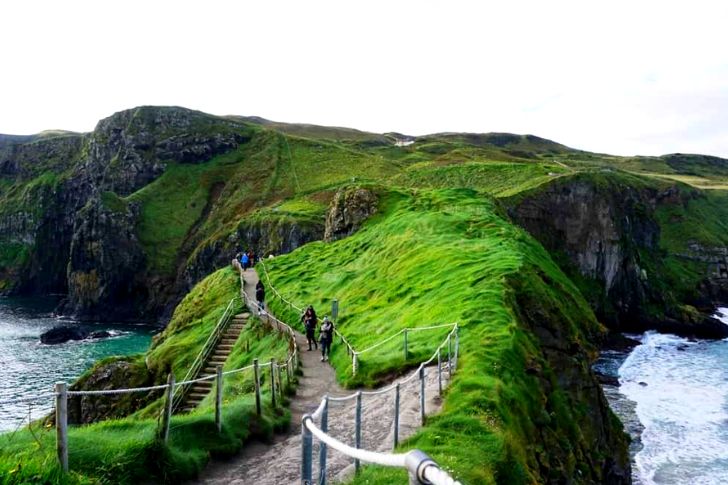
According to a 2022 survey, Ireland's meandering Carrick-a-Rede Rope Bridge welcomes over 500K foreigners yearly. Despite the crossing's moderately safe appearance at first glance, in reality, it sits about 30 meters above the jagged rocks with sheer drops to the freezing ocean on either side.
This 66-foot rope bridge connects the tiny island of Carrickarede to the mainland. It was first constructed in the 18th century by salmon anglers, but since its reopening in 2008, the National Trust has taken ownership and is maintaining it. Usually, it takes about two hours to cross the bridge after a 20-minute walk from the parking lot.
Deception Pass Bridge in Washington, USA
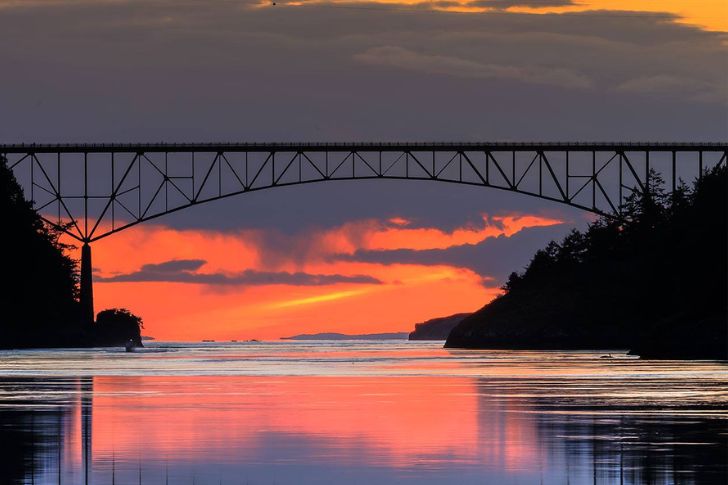
The Deception Pass Bridge is commonly known as a two-lane bridge connecting Washington State Route 20 to Whidbey Island County and from Fidalgo Island to Skagit County in Washington. In 1982, the government listed it as a historic site before its repaint, which cost more than its initial construction cost.
You must be wondering what makes the 1934-built Deception Pass Bridge so scary. Frequently wrapped in a mysterious fog, crossing it feels like navigating a haunted area where you can only see your feet. Nonetheless, it is one of the more soundly-constructed bridges on this list that can accommodate over 20K passing vehicles per day.
The Bridge of Immortals in China
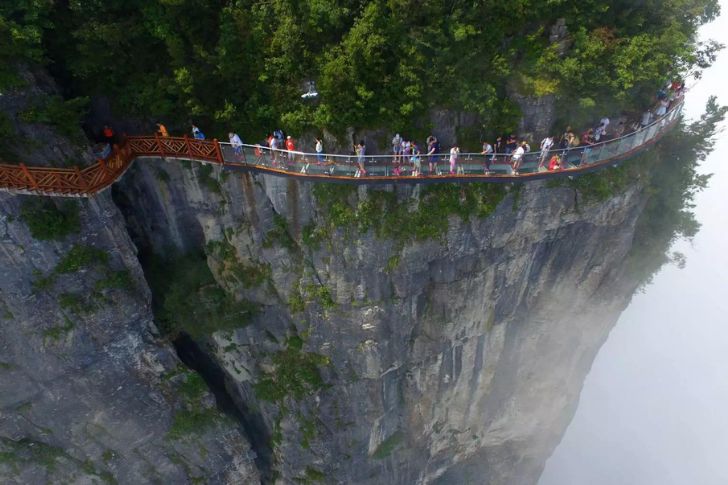
Located in the Rocky Mountains of Huangshan, China, the Fairy Walking Bridge, aka the Bridge of Immortals, connects two rocks at an average altitude of 1320 meters (4330 feet) above sea level. Though the structure looks ancient, that's not the case and the actual year of construction was 1987.
However, it got its nickname "Bridge of Immortals" long before 1987 because people traversing the old hanging path would fall into the abyss below and lose their lives. The remains of the old stone bridge are still visible, and its design and craftsmanship are credited to Li Chun, who reportedly built it during the Sui dynasty in 581-618.
Hanging Bridge of Ghasa in Nepal

One of those places you should have on your bucket list is the Hanging Bridge of Ghasa in Nepal, whose simple presence is breathtaking. It is located in the same-named community and is frequently used to transport people and animals. According to sources, locals first built the bridge due to the significant number of animals using this route in the '50s.
Despite having the appearance of being an incredibly precarious and shaky bit of architecture, the 1128-foot-long and 135-meter-high (442 feet) crossing is unquestionably quite reliable. Fitted with high rails, the Nepalese government has declared it exceedingly safe for everyone to traverse.
Storseisundet Bridge in Norway
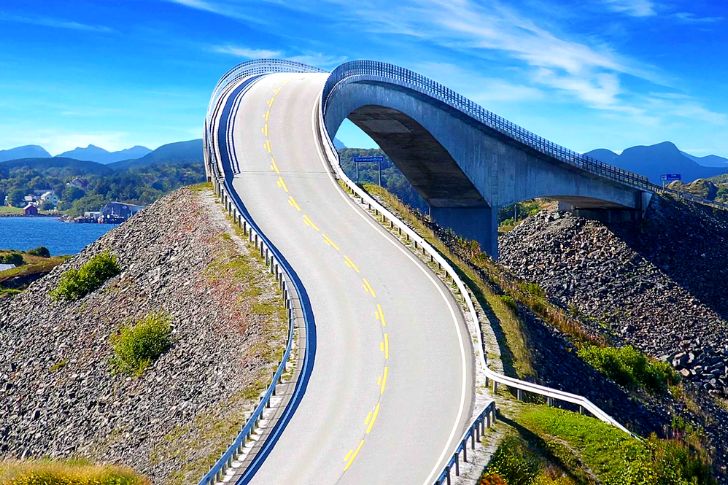
If you want to know how high your adrenaline can go, visit the Storseisundet Bridge in Norway. The route connects the island of Averøy in Møre og Romsdal County to the land along the Romsdal coastline. It's also joined by eight other bridges, the longest being the Storseisundet Bridge.
After a six-year construction period, the bridge finally opened in 1989. The builders took a considerable risk as they faced 12 hurricanes and still delivered their best. The cantilever bridge is about 850 feet long, and it's special because it unfolds like sinuous ocean waves. There are so many winding slopes that the remaining structure sometimes disappears from view while crossing.
Q’eswachaka Rope Bridge in Peru

We've all heard about weaving things like baskets and mats, but have you ever heard of a handwoven bridge? Strange, right? Many years before humans discovered the power of steel and concrete, we used stiff ropes instead. The Q'eswachaka rope bridge is one of the world's only surviving handwoven ones that local tribes built hundreds of years ago using woven grasses in a long-lost Inca way.
Though its antiquated design doesn't guarantee the utmost safety, anyone who's lucky and brave enough will cross to the other side. The woven straw crossing is 118 feet long and hangs 60 feet above the canyon's rushing river.
Eshima Ohashi Bridge in Japan
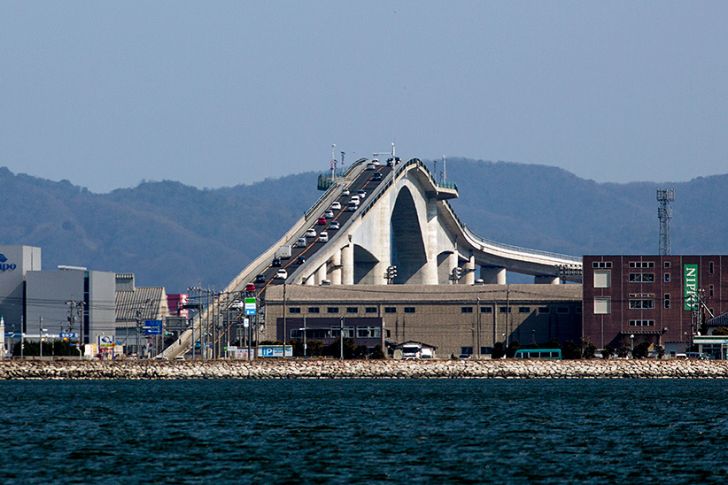
What's dangerous is often a matter of perception. Some things look perilous but are not, while others look safe and can kill you. Luckily, the Eshima Ohashi Bridge in Japan fits the first category. Arguably one of the country's most recognizable bridges by far, people have shared pictures of it all over the Internet due to its steep inclination.
Although the Eshima Ohashi Bridge looks like a rollercoaster, it feels nothing like it. The bridge's steepness has been exaggerated by some talented photographers who found the best angle to make it look scary. But in reality, it has a gradient of just over 6% and is perfectly safe.
Triftbrücke in Switzerland
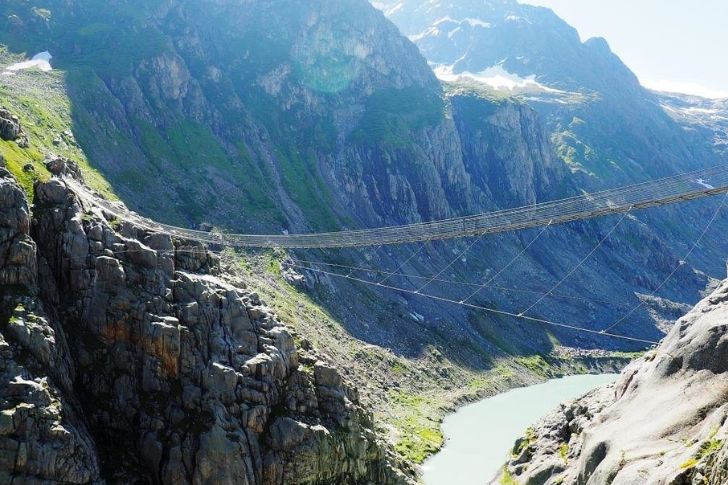
If you wish to face a real-life horror, challenge yourself to cross the Triftbrücke, known as Trift Bridge in Switzerland. Though the country is known as one of the world's safest, that doesn't guarantee your comfort in using this adrenaline-inducing bridge. The 2004-built structure is just a simple suspension bridge about 170 meters (557 feet) high and 100 meters (328 feet) long.
Luckily, some cable cars and a gondola help people cross to the other side, but they'll still have to take a one-hour over-the-hill adventure. Before it became a massive tourist attraction center, it was previously used by the nearby Trift Hydroelectric Plant employees to access a power site.
Longjiang Suspension Bridge in Southwest China
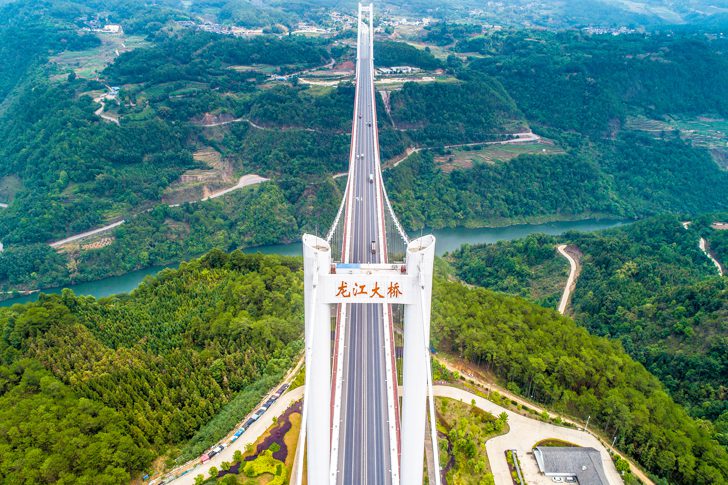
With over 35 extraordinary bridges to their credit, the Chinese are some of the world's most innovative and bravest people. One of the country's most breathtaking structures is the Longjiang Suspension Bridge, which the talented architects and engineers took up to five years to design and build and finally completed in 2016.
It's one of the most extended structures of its kind in the world, created purposely to reduce traffic and connect Tengchong and Baoshan. However, it's ended up being a fabulous tourist attraction. The majestic 920-foot-high Longjiang Grand Bridge passes over the Longjiang River in southwest China and is over 8,000 feet long.
U Bein Bridge in Myanmar, Malaysia

The U Bein Bridge is considered one of the oldest footbridges in the world. It was constructed in 1850 to aid in the crossing of Taungthaman Lake in Malaysia. At the time, locals hadn't discovered steel and concrete, so they made do with what was available: teakwood, a popular tropical hardwood.
The 1.2-kilometer bridge has been a massive tourist attraction for decades, which has also helped the locals earn a living and further develop their area. However, as the years go by, the U Bein Bridge is growing weaker by the day, and its over 1,000 pillars can no longer hold heavy weights.
Living Root Bridges in Meghalaya, India
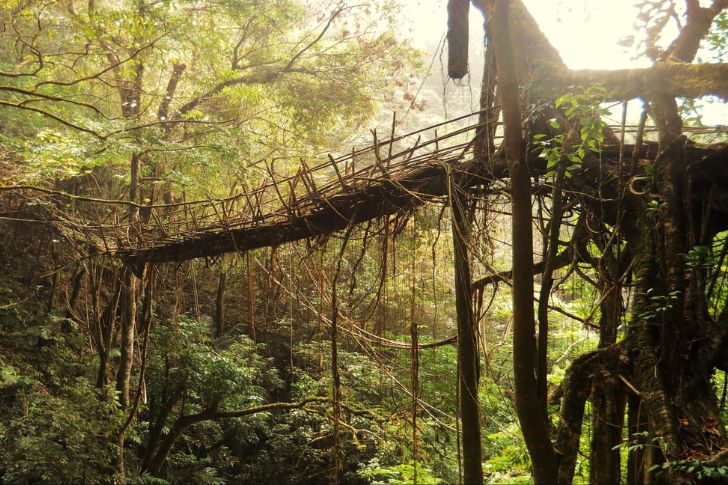
Sometimes when Mother Nature decides to give you a treat, it's free and lasts longer. The Meghalaya residents in India used their creativity to create this ancient-looking footpath that has remained intact since 1844 with minor maintenance. The Living Root Bridges are a real-life definition of making peace with plants, as they were entirely made of roots with a few touches of bamboo scaffolding.
Aside from India, we can also find similarly distinctive primitive structures on some Indonesian islands. However, over 50-meter-long Living Root Bridges like this one remain unique, and UNESCO added them to its list of the world's most treasured heritage sites.
Marienbrücke in Germany

Although this bridge is well-known for its unique view of Ludwig II's fairytale castle, it surpasses the latter's age by over fifty years. The Marienbrücke (Maria Bridge) is a steel structure located a few meters from Neuschwanstein Castle in Germany. Initially built by King Maximilian II of Bavaria in 1845, he named it after his wife, a hiking enthusiast.
Later, in 1866, when he began building the castle, their son reconstructed the footbridge out of steel. His engineers used steel cables and more pliable materials to innovate the original architectural design, ultimately raising a sturdier crossing at a height of more than 200 feet above the ground.
Slaters’ Bridge in England
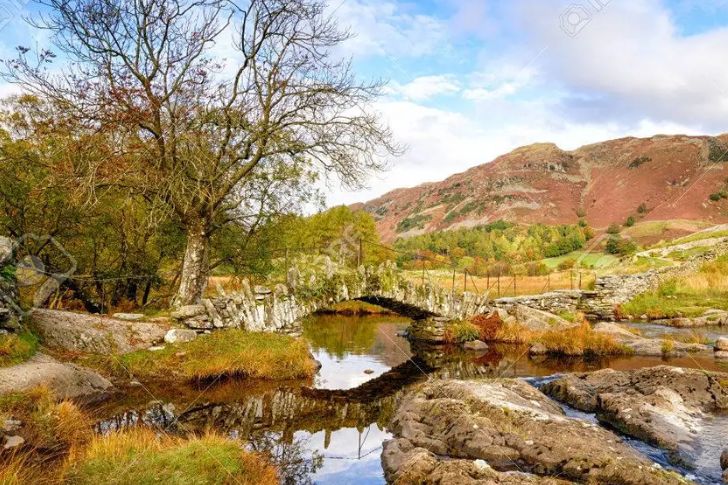
Slaters' Bridge, a charming packhorse crossing built in the 17th century, spans the River Brathay. It's only a short walk down the alley and across the fields from the Three Shires Inn. Previously, Little Langdale served as a junction for many packhorse routes that went to Keswick, Penrith, Ravenglass, and the Cumbrian coast.
Consisting of 15-foot-high segmental arches and built 40 feet above the water, locals historically used it to transport Coniston and Tilberthwaite from the mines. Although the mine's remnants have a long-lasting effect on the area's ecosystem, they make a perfect tourism destination. UNESCO listed it as a historic site in 1967.
Royal Gorge Bridge in Colorado, USA
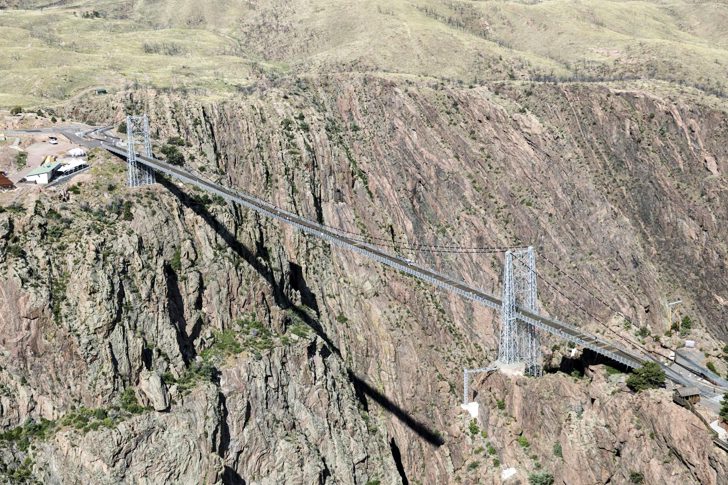
If you're acrophobic, don't even think of using the Royal Gorge Bridge in Colorado. It's one of the highest suspension bridges in the United States and the seventh-highest in the world. The 1000-foot-high structure fits between two massive mountains in Cañon City and runs above the famous Arkansas River.
The government inaugurated the Royal Gorge Bridge in 1929, having built it as a tourist attraction. And it has served that purpose for close to a century. Unlike other bridges that took years of construction, this 268-meter-long structure only took six months, thanks to its funders, the Royal Gorge President and the Amusement Company.
Montenegro Rainforest Bridge in Costa Rica
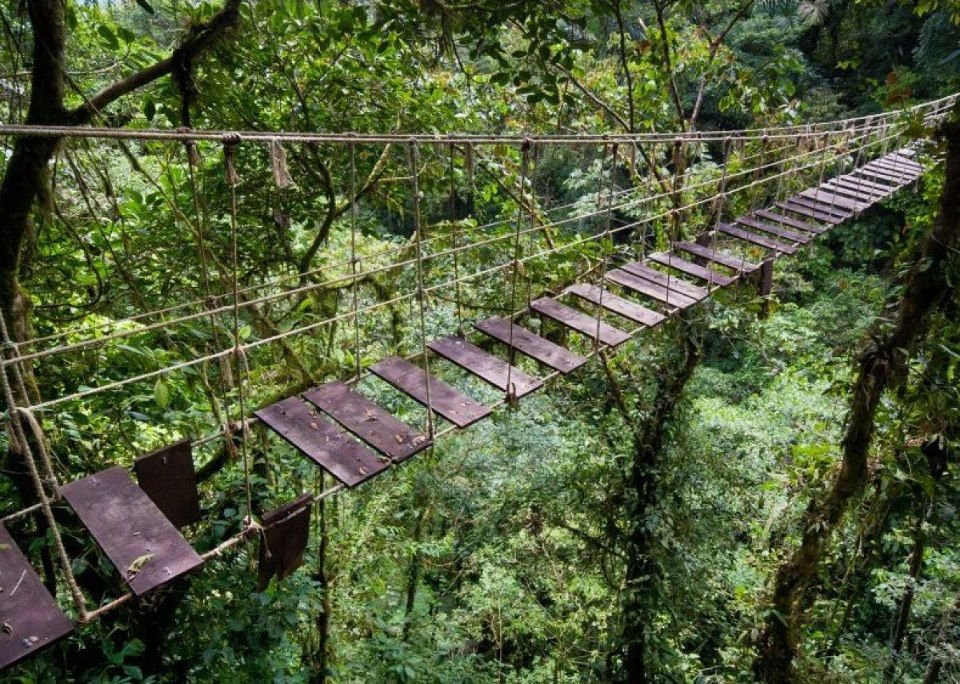
If you're a nature fanatic, the lush foliage of the Montenegro Rainforest Bridge in Costa Rica may be the right choice. Its alluring jungles surround this bridge, giving you a front-row view of the spectacular variety of flora and animals that make up the Montenegrin rainforest.
Though it's pretty easy to get lost in the calm of nature, it's best not to let one's guard down; otherwise, you risk losing your balance on one of the gaps between the wooden planks. The 968-foot structure was made in 2003 by the Taiwanese company MAA to help people have a more immersive nature experience.
Plank Road in the Sky in China

The Chinese are at it again with this scary tourist attraction. The Plank Road in the Sky is regarded as one of the most dangerous hiking sites and is located at the highest peak of the Southern China Mountains. The over 7,070-foot-high bridge is undoubtedly one of the most exciting places thousands of foreigners visit annually.
Though no official death statistics have been reported, this terrifying trial is not for the faint-hearted. Some historical records indicate that descendants of the Han Dynasty built it between 202 BC and 220 AD. Nowadays, the place is relatively safe as workers provide transportation and guidance to the end and back.
Canopy Walkway in Ghana

Many parts of Africa are blessed with dense jungles, and Ghana is no exception. When visiting the heavily forested Kakum National Park, one should expect to use the Canopy Walkway at some point to cross from one place to the other. The 350-meter-long (1148 feet) bridge is connected through seven treetops and sits 100 meters (328 feet) above the ground.
A Canadian organization for parrot trapping initially constructed it but later transitioned to human use and became a dangerous trap for them instead. Luckily, the local authorities installed protective side nets to attract and protect visitors while making their outdoor adventure deep into the jungle as safe as possible.
Moses Bridge in the Netherlands
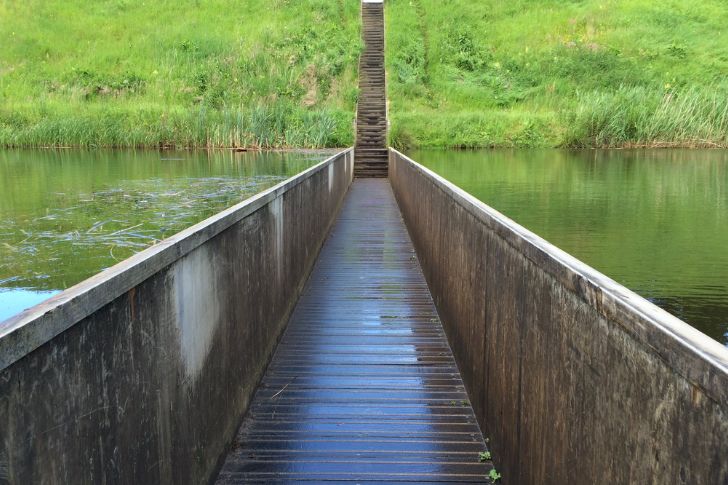
If you've never seen a trench bridge, visit Fort De Roovere in the Netherlands to use this one, called the Moses Bridge. Dutch architects planned an 8.10-mile-long passageway below the water level to avoid ruining the landscape. So it gets easily flooded during the winter, particularly when it's raining heavily.
Impressively built in just two months, the Moses Bridge transforms in the summer months when it becomes a one-of-a-kind, magnificent crossing point. The name came from the fact that it divides water into two creating a safe pathway in between, and its wooden waterproof foil helps to prevent water from sipping in or spilling over the bridge's sides.
Vitim River Bridge in Russia
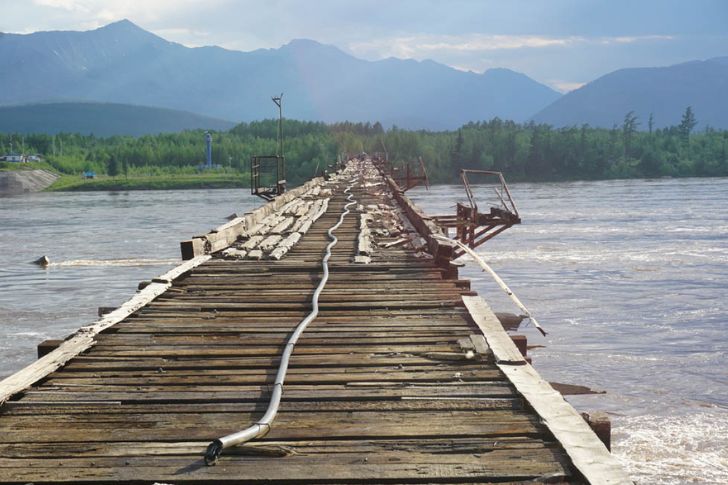
Deep within the remote area of Siberia in Russia sits the Vitim River Bridge, serving the locals and adventurers alike. The famous destination, which is significantly underfunded compared to affluent, cosmopolitan areas, is one of the world's riskiest river crossings. Its rotting wooden planks leave drivers precariously poised, and slipping during icy conditions is highly likely.
This '80s-constructed old train bridge is a disaster waiting to happen, given its heavy daily use by pedestrians and vehicles. It has a tiny, six-foot-wide path with no railings as it was built for use by trains, making it unsafe. At this point, anyone crossing must probably make repairs first.
Puente de Ojuela in Mexico
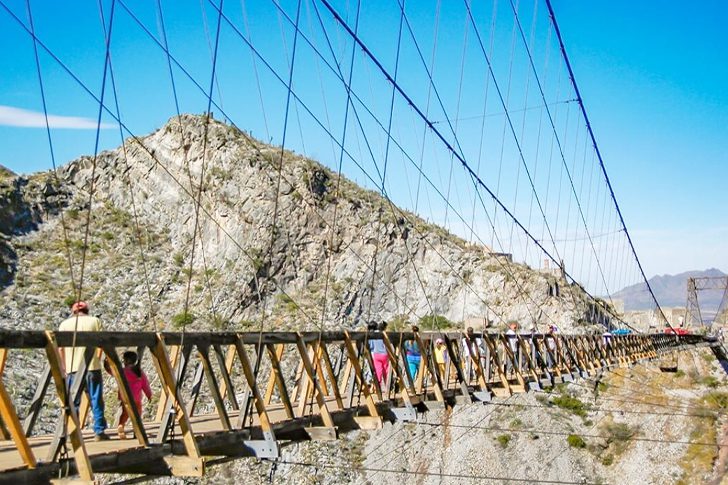
The Puente de Ojuela sits near a small ghost town called Mapimi in the former mining settlement of Durango, Mexico. The precarious structure, also known as the Mapimi Bridge, has become a tourist attraction, particularly for those who enjoy the world's dangerous and bizarre places.
This 1898-completed passageway is the only surviving structure to have served the Ojuela miners, but it became a tourist attraction in 1991 after restoration. Its span of 271.5 meters (890 feet), and its pylons are 315.5 meters (1035 feet) apart, adding to the great danger of using it after circumnavigating the treacherous road to the bridge itself.
Sunshine Skyway Bridge in Florida, USA
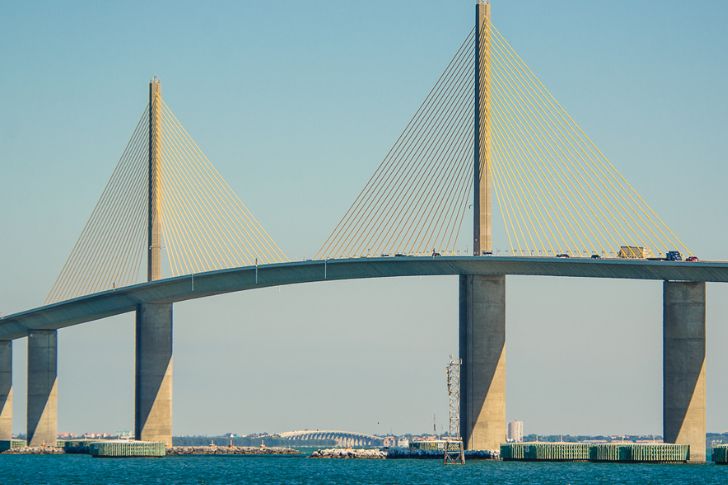
After the former bridge's partial destruction by a ship that tragically cost 35 people their lives in the early '80s, the Sunshine Skyway Bridge was reconstructed and commissioned in 1987. The world's longest cable-stayed concrete passageway in Florida is one of the state's famous symbols.
With the recommissioning, the local authorities instituted stringent safety measures to protect its users, even though using it is still a haunting experience. The reconstruction of the connection between St. Petersburg in Pinellas County and Terra Ceia is estimated to have cost $244 million. Nowadays, it has crisis hotline numbers to help prevent people from jumping off the rails.
Sidu River Bridge in China
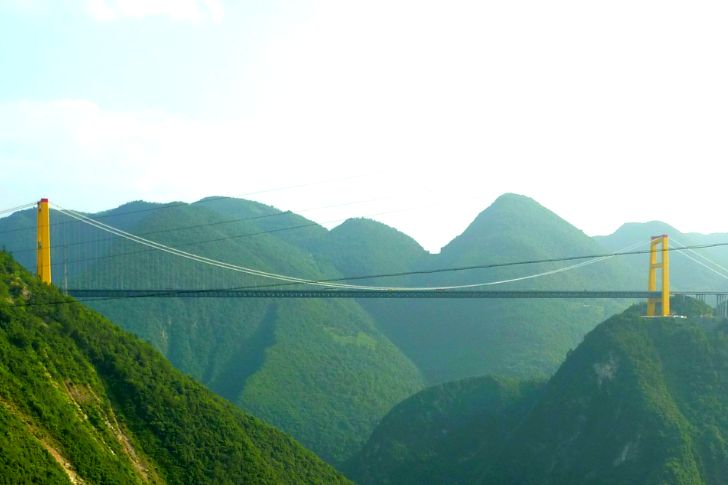
China has a penchant for making mind-boggling structures, and the Sidu River Bridge is another one of the country's masterpieces. This world-renowned structure is a suspension bridge that connects two disparate parts of the nation: the mainland and Hubei province. Before the government built the bridge, it wasn't easy to travel through multiple rivers and mountainous terrain.
The magnificent engineering feat was part of the country's ever-expanding highway system, but its placement is so high that it sends shivers down one's spine. The idea of driving over it is scary enough, much less walking across. Kudos to the spirited workers who pulled building this off!
Iya Kazurabashi Bridge in Japan
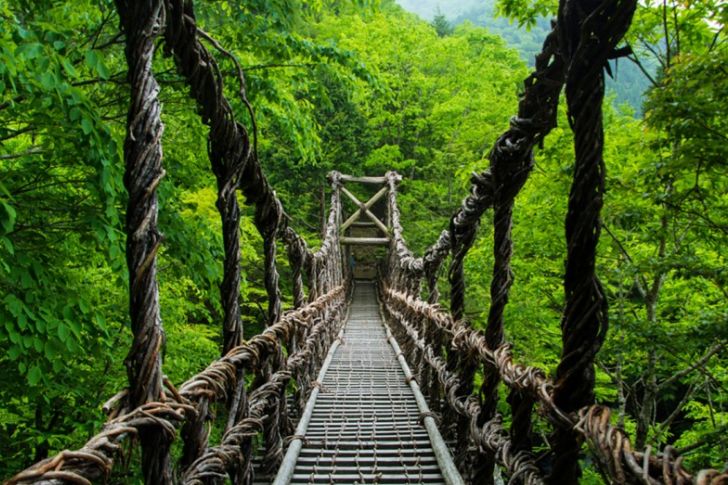
Crossing the river of the Iya valley in Japan was an uphill task in the past unless one used the 13 locally made bridges known as the Iya Kazurabashi Bridge. Only three of these historic structures made from mountain vines exist today. But locals once used dozens of them to get to the scenic areas of the dreamy small river and green mountains.
As much as Japan is known for its modern innovation, this traditional passageway has lasted for centuries throughout its colorful history. However, the bridge's wooden planks are placed far apart with huge gaping gaps between them, and one must take care to avoid getting their foot stuck.
Millau Viaduct in France

In the southern French valley of Tarn lies the Millau Viaduct, an engineering masterpiece spearheaded by English architect Lord Norman Foster and French structural engineer Michel Virlogeux. The multi-span cable-stayed bridge was completed in 2004 and opened to the public, although it's often used in the summer rather than the winter, as you can't successfully cross it when it's snowing.
The 2006 recipient of the Outstanding Structure Award stands taller than the Eiffel Tower, measuring 343 meters in height. It took about three years to get the 886-foot-long bridge ready to solve the traffic menace, particularly that of tourists en route to Spain for summer vacation.
Lake Pontchartrain Causeway in Louisiana, USA

Those with aquaphobia (fear of water) will find their journey through the Lake Pontchartrain Causeway a difficult one to bear. The passageway with two parallel bridges is about 32 miles long, with nothing surrounding it but water. That's already a torturous journey made worse because nearly 20 vehicles have flown over the rails since the mid-'90s.
Often christened "The Causeway," the bridge connects the two cities of Mandeville and Metairie and has become an indispensable route for many people. In the summer, using it is all fine, but when it's foggy during colder months, the bridge's use becomes restricted to 35 miles per hour due to poor visibility.
Capilano Suspension Bridge in Canada
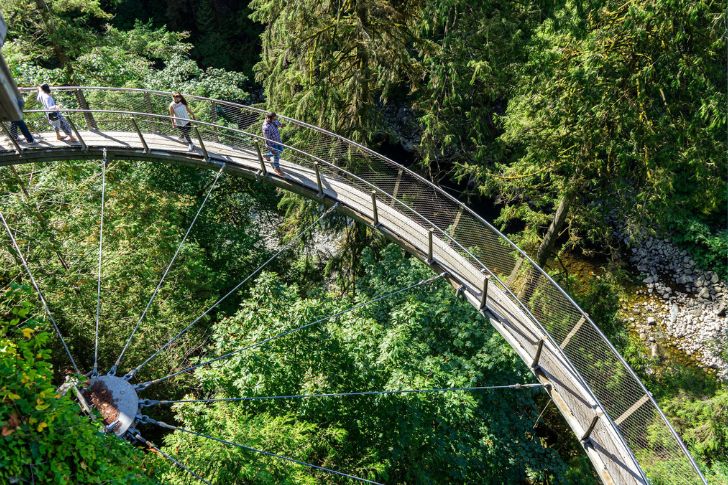
Aside from Marple Syrup, Canada is known for its highly polite people, plentiful moose sightings, and breathtaking scenery. The Capilano Suspension Bridge, which hangs over the Capilano River, is one of the country's extreme experiences. It doesn't only offer a heart-pounding experience, but the famous structure has some element of danger to it.
Approximately 800K people visit this Vancouver-based passageway every year to take in the outstanding natural beauty around it and its fascinating history. It was inaugurated in 1889 and has been a landmark since the 19th century. The great British Columbia rainforest-located bridge is 70 meters (229 feet) above the river and 140 meters (459 feet) long.
Suspension Glass Bridge in China

China is the world's second-largest economy, and it uses that fact to show its mettle in bridge construction. With numerous towering crossings, none of its bridges are as terrifying as the Suspension Glass Bridge. This anxiety-inducing structure has a base made of glass, meaning anyone walking on it can see the ground below clearly.
It's no surprise that it's been dubbed "Brave Men's Bridge," as crossing the Huangchuan-based structure within the Three Gorges Scenic Area requires bravery. The bridge, which spans over 1,726 feet across the Lianjiang River and is 526.14 meters long, is far from ideal for people with acrophobia, which is a fear of heights.
Mackinac Bridge in Michigan, USA

During the winter, crossing the scary and dangerous Mackinac Bridge in Michigan is an uphill task, while summer presents an excellent opportunity for its use. This 20th-century-built structure was commissioned in 1957 thanks to the back-breaking hard work of 350 engineers. It's not advisable to drive through it on snowy, windy, and foggy days.
The world's fifth-longest suspension bridge has gory stories of cars flying off it in stormy weather, but it remains a local attraction. Many tourists troop to the location yearly. They seem undeterred by some of its saddening stories, including a man who died from decompression after a brisk crossing.
Monkey Bridges in Vietnam

Those thirsty for an exotic experience of Southeast Asia should think about traversing the Mekong River of Vietnam. Aside from being a beautiful location, the Mekong Delta is home to some of the most beautiful and fragile bridges in the world. In fact, these worrisome structures are the passageway to some scenic locations.
One of them is the monkey bridge found in the forested region. It's essentially a basic wooden structure that needs a lot of balancing to cross over the many rivers. Although these rickety structures may not cause any fatalities, be prepared to get wet should you slip due to loss of balance.
Kawarau Bridge in New Zealand

Engineer Harry Higginson was tasked with building the Kawarau Bridge over the Kawarau Gorge in New Zealand, a feat he had achieved by 1880. Despite the difficulties, the result was a magnificent structure that stood the test of the rocky gorge's strong winds. It stands 141 feet above the waters and doesn't look that dangerous.
However, the passageway is exciting for what takes place at its center. It's known as the world's home of bungee jumping, the original, so test your bravery at the bridge's edge. Many tourists flock to the unique structure with their hearts pounding and their minds racing to experience what the site offers.
Rakotzbrücke Devil's Bridge in Germany
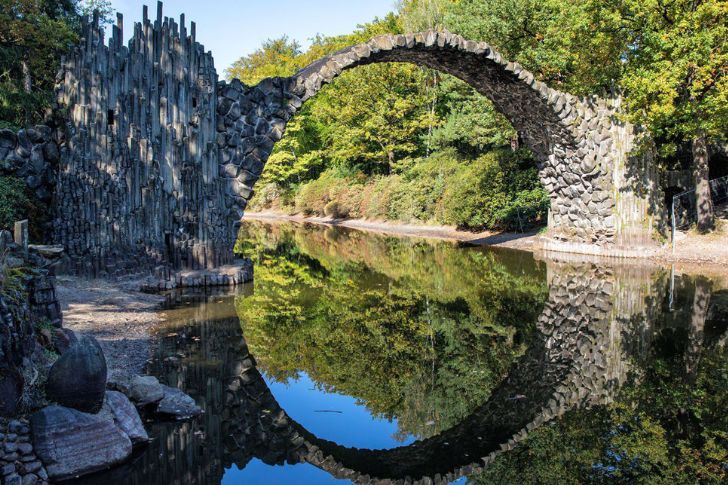
Within the verdant foliage of Kromlau Park in Germany nestles a delicately arched passageway called the Rakotzbrücke Devil's Bridge. Its perfectly round shape interlocks with the one reflected on the water to give a jaw-dropping result. As for the danger here, the structure is of sturdy build, so there's no fear of it crumbling or anyone falling off it.
However, the 1860-commissioned crossing can be an unpleasant experience for those who believe in the occult and the supernatural. Local legends claim a ghostly image is sometimes reflected in the waters below. Well, rest assured, there's nothing devilish about this 19th-century bridge, so plan to visit it.
Thai–Lao Friendship Bridge in Thailand/Laos
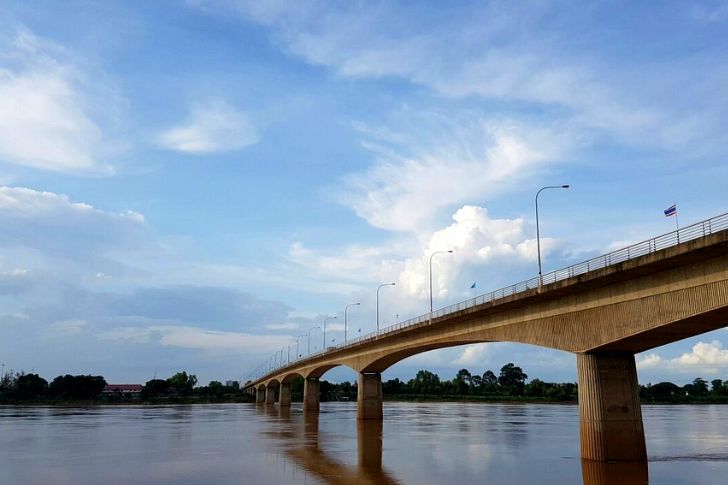
As the name implies, the Thai-Lao Friendship Bridge is a significant structure that connects neighboring countries Laos and Thailand. Although meant to foster good relations between the two nations, the passageway ironically lies in a dangerous state and doesn't inspire much trust in those using it.
Most of the local populace uses the bridge daily to go to work, even though its need for renovation and the rapid Mekong River below make collapse a constant threat. However, two Friendship Bridges are now connecting the two states after another bout of speedy construction. So at least there is a safer route to take, despite being much longer.





